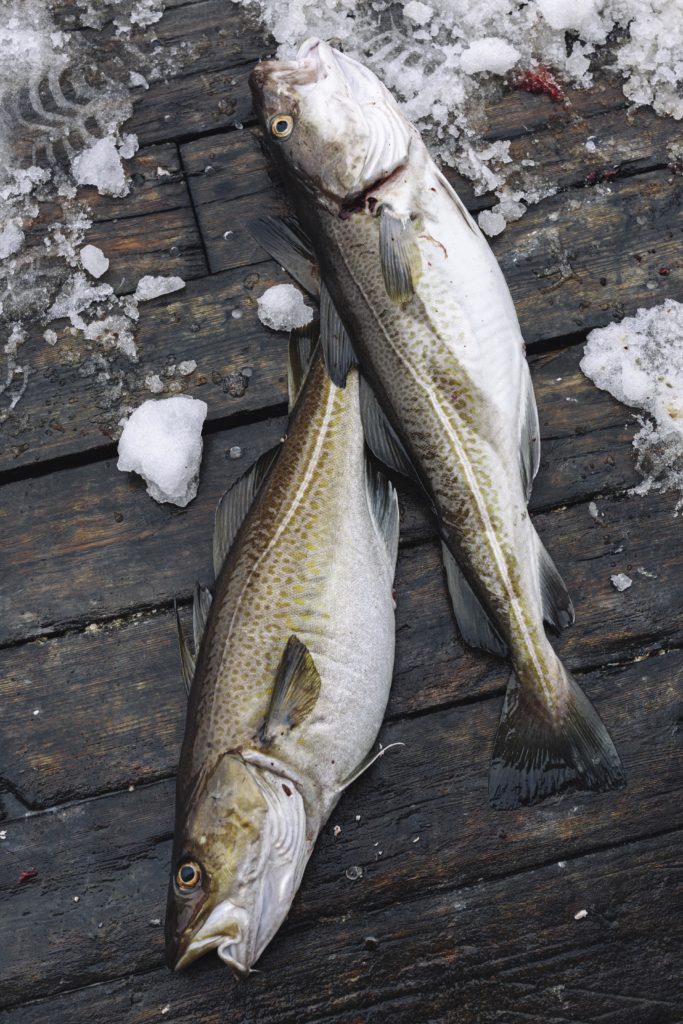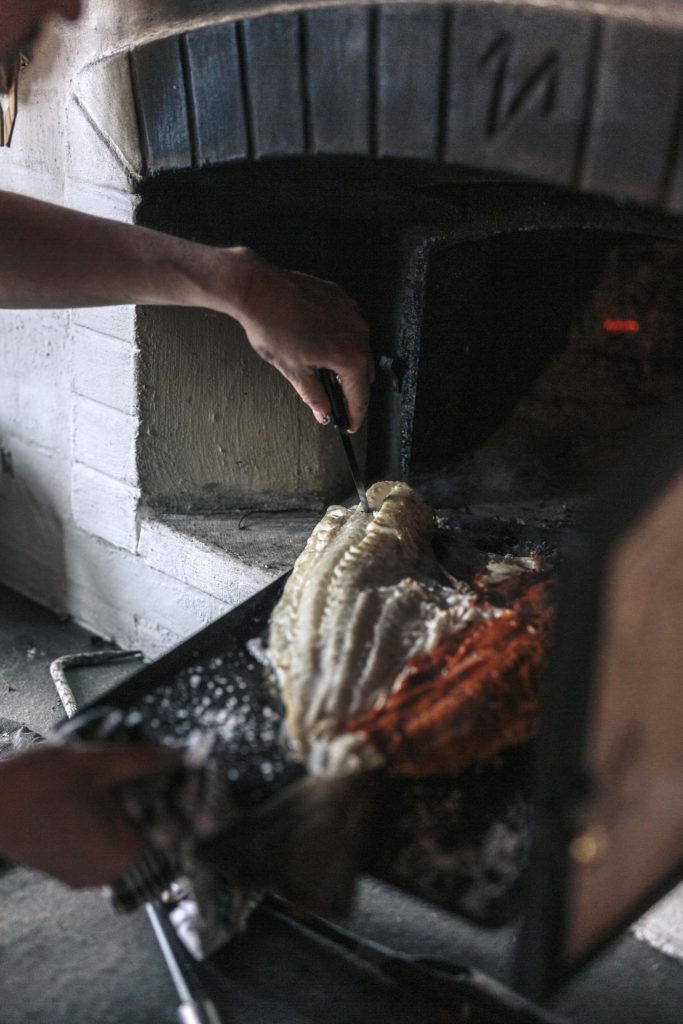Skrei, hjellosing, boknafisk, tørrfisk.. as they say – “dear children have many names” – and so does the Arctic cod. Depending on how it’s prepared, we have a word for everything. Skrei is the main word we use – an old norse word meaning “to wander”. And that’s exactly what its been doing – for as long as the oldest stories can tell us. Starting in early spring they wander to our shores to spawn and feast and so the fishermen have followed. In order to stock up on fish to live on throughout the year, people dry the cod – it turns out our conditions are optimal with the gentle and salty coastal air ensuring that the fish dry quickly, keeping all the nutrients intact.
The Norwegian Arctic cod population is one of the most well-managed fish stocks in the world, and «Lofoten stockfish» is in fact a Protected Geographical Indication (PGI) in Europe, like Champagne. People began exporting stockfish – tørrfisk – during the Viking Age and it quickly became one of the building stones of the Norwegian economy. Tørrfisk was regarded as expensive and exquisite – it contained a lot of protein, had a shelf life of four to five years while the weight was reduced to only a quarter
Until this day, we are still drying the cod exactly the same way as the Vikings did a thousand years ago. If you ever find yourself in our islands during spring, you’ll be surrounded by the many wooden racks – called hjelle in Norwegian – and people wearing orange oil skins, climbing up the racks whilst hanging the cod ready for drying.
As the whole cod is used from nose to tail, nothing is wasted. The roe can be cooked or turned into the most delicious caviar, and thin flakes of dried fish enjoyed as a snack .. but our favourite is definitely fresh Skrei served straight from sea to plate. Below shows a glimpse of the Skrei’s harvest from one of our neighbours.






Photos: Dan Mariner
